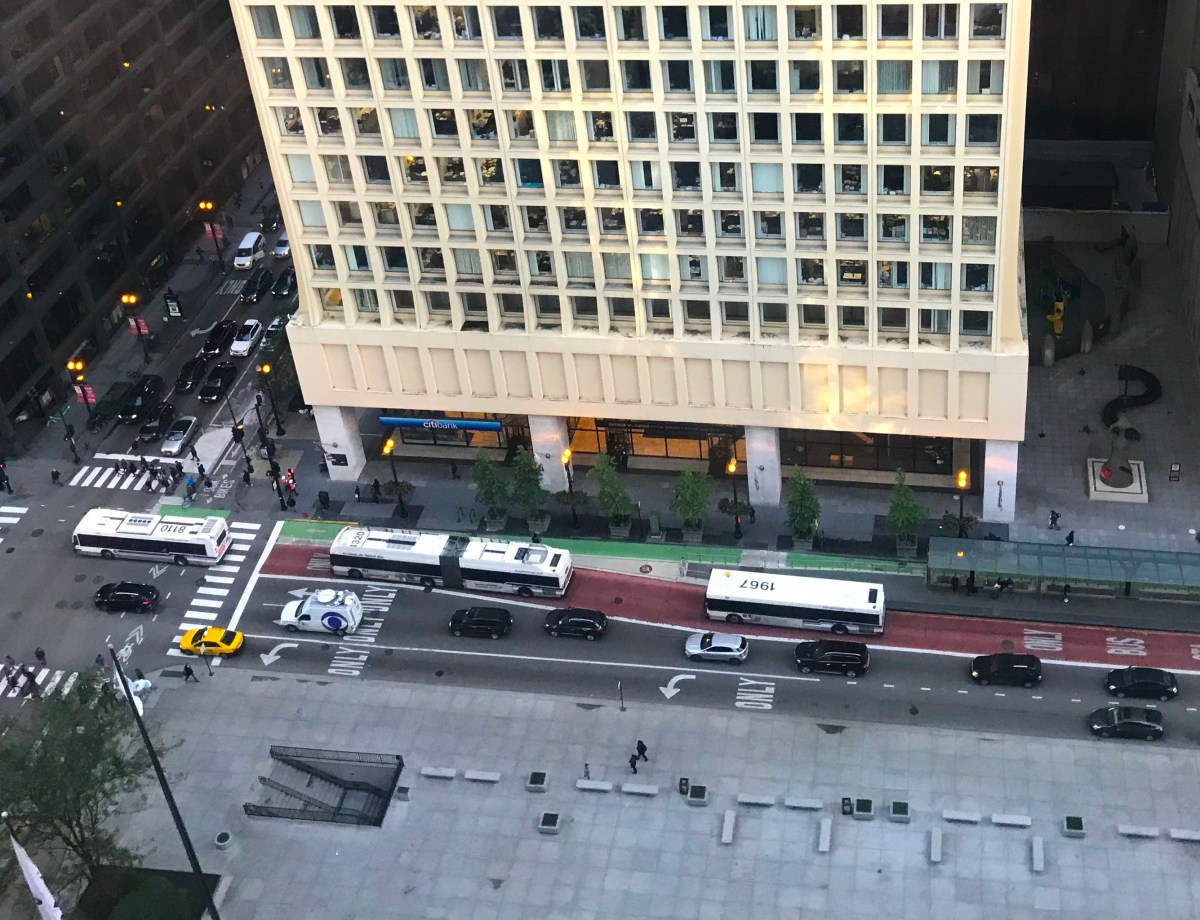On Friday as part of a lunchtime lecture series hosted by the University of Illinois at Chicago's College of Urban Planning PhD Students, Gregory Shill of the University of Iowa discussed his paper "Should Law Subsidize Driving?" Shill looked at how how the American legal system has historically tipped the scales in favor of cars, and what we can do to change that paradigm.
In his paper Shill notes that in the early 1900s, business leaders and lawmakers pushed hard to change the dominant urban mode from public transportation to the private car. And, as Streetsblog readers are well aware, continued investment in driving over transit has caused a host of social problems. In the U.S., motor vehicles are the top source of greenhouse gases and crashes are leading cause of death for children. Our auto-centric transportation system has many direct and indirect costs for society, and it hurts the most vulnerable residents -- kids, seniors, people with disabilities, low-income individuals, and people of color -- the most.
Shill noted that while the switch from transit to private cars, and the resulting damage to society, has been partly driven by consumer preference, but it has also been "encouraged—indeed enforced—by law. Yes, the U.S. is car-dependent by choice. But it is also car-dependent by law."
However, Shill offers a path forward for legal solutions to reducing car-dependence. "It begins by identifying a submerged, disconnected system of rules that furnish indirect yet extravagant subsidies to driving. These subsidies lower the price of driving by comprehensively reassigning its costs to non-drivers and society at large." He says these subsidies are found in every branch of law, including traffic rules, land use laws, and tax, tort, and environmental law. "Where [the law] is destructive, it is uniquely so: law not only inflames a public health crisis but legitimizes it, ensuring the continuing dominance of the car." He urges a shift towards legal reforms that promote equity, economic prosperity, and health.

During his talk at UIC, Shill discussed the ways 20th Century U.S. transportation planning, backed up by the legal system, left pedestrians out in the cold. "The paradox is that while it became possible to travel to the moon, it also became impossible in many cases to walk across the street," he said. He noted that there's still resistance to implementing various "lifesaving measures" and sustainable transportation initiatives, like traffic enforcement cameras and bus lanes, due to fears of inconveniencing drivers.
"Drivers don't always respect the law," Shill noted. "[Pedestrians] are pushed to the margins of public spaces in the right of way. If they take one step off [the sidewalk], they are in instant peril. Even at the dedicated crossing points, they aren't really protected."
He noted that we also see inequities in the allocation of public space. "Motorists are able to luxuriate in their own environment, listen to their music if they want, enjoy a vehicle that has the capacity to carry four, five, six, seven times as many [people] as he needs. Sometimes people travel around with their whole family, but the typical scenario is one or two people in a car."
Meanwhile transit riders are often packed into crowded buses and trains due to insufficient transit funding, frequency, and capacity, Shill pointed out. "And on buses you can get stuck behind single-occupancy cars, unless there is a political decision to create [dedicated] space for them. There has already been a political decision, in most places, to not create a dedicated path for a bus. That can be undone."
Read Shill's paper "Should Law Subsidize Driving" here.






